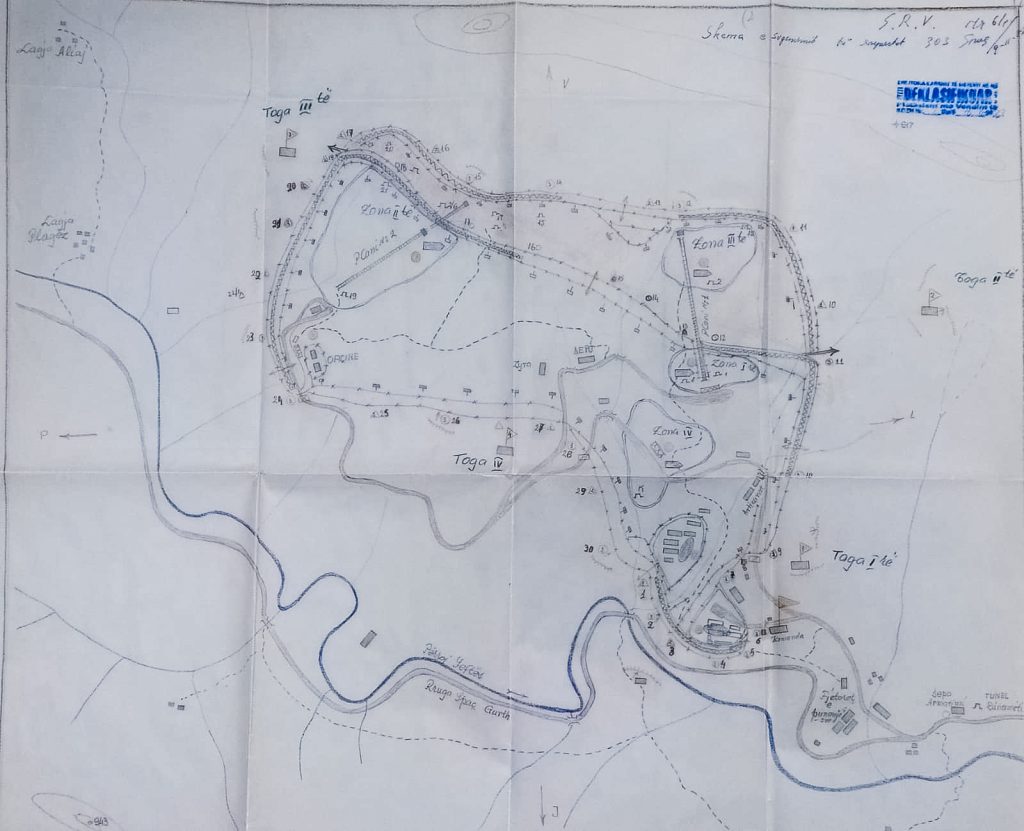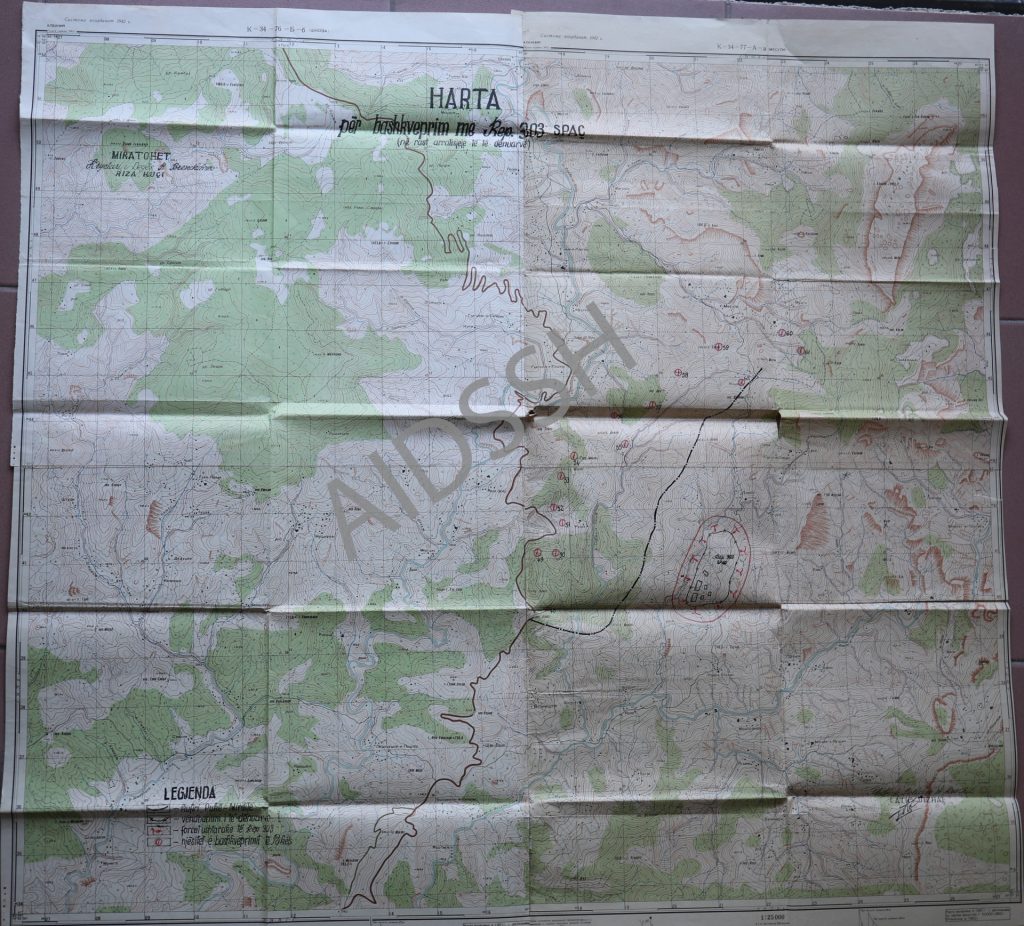Perimeter and Security
Perimeter Layout
The Spaç camp territory covered a large area and was surrounded by a double fence made of panels and barbed wire, reaching up to 4 meters in height. Mounted on each post supporting the barbed wire fence was a spotlight.
The larger perimeter enclosed the entire territory of the camp as well as the mountainside area where the four galleries of the Spaç mine were located.
The smaller enclosure surrounded the area where the political prisoners lived. Just outside this perimeter were the solitary confinement cells, designed to isolate prisoners and prevent contact between those in isolation and the rest of the inmates.
The outer fence was secured with a mesh of barbed wire arranged both vertically and horizontally, interrupted by 30 watchtowers manned by soldiers.
Information about the perimeter of the Spaç labor camp is presented in File ORV, No. 123, from the year 1979, which documents the layout of the enclosure.
In addition to the camp’s fences, volunteer groups made up of local residents from the areas surrounding Spaç were organized to capture those who managed to overcome all the barriers. In this way, escaping from Spaç was nearly impossible for the prisoners.

SECURITY IN CASE OF ESCAPE ATTEMPTS
To prevent any escape attempts from the camp, in addition to equipping the outer and inner fences with guard posts staffed by soldiers, command guards, and watch supervisors, the process included the preparation of security maps outlining the protection and surveillance of the camp from strategic points. In the archives of AIDSSH, the security plans for Spaç, created to prevent escape incidents, are illustrated in 14 documents.
Despite the high level of security, the efforts of political prisoners at Spaç to escape the hell of the labor camp were persistent. Numerous cases of escape attempts throughout the entire history of the labor camp. Some former prisoners managed to break through the fences but were later captured; some were executed by the Spaç guards, while others were caught and re-sentenced. In cases where prisoners were captured or eliminated, the camp command even proposed decorations for the guarding soldiers.

References:
AIDSSH, Fund 1 H-Gj, File No. 11893
AIDSSH, Fund: Directorate of Internal Affairs Mirditë, File ORV, No. 123, “Unit 303 Spaç”


